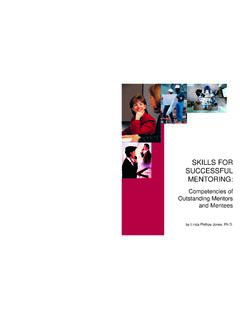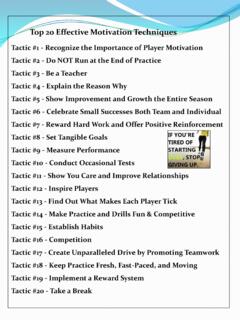Transcription of SAFETY GUIDE FOR CAREER AND TECHNICAL EDUCATION
1 SAFETY GUIDE FOR CAREER AND TECHNICAL EDUCATION Dr. Terry Bergeson State Superintendent of Public Instruction Mary Alice Heuschel Deputy Superintendent Learning and Teaching Mickey Lahmann Assistant Superintendent Curriculum and Instruction Rob Fieldman Director CAREER and TECHNICAL EDUCATION Moe Broom Program Supervisor Technology and Industry Pathway Compiled and Edited by: Mike Opp Former Program Supervisor Technology and Industry Pathway TECHNICAL Assistance by: Robbie Stanford and Jennifer Olsen CAREER and TECHNICAL EDUCATION This material is available in alternative format upon request. Contact CAREER and TECHNICAL EDUCATION , 360-725-6241, TTY 360-664-3631. The Office of Superintendent of Public Instruction complies with all federal and state rules and regulations and does not discriminate on the basis of race, color, national origin, sex, disability, age, or marital status. May 2002 (Updated September 2002) Section 1 Page 1 TABLE OF CONTENTS GUIDE Section I Instructor Information Legal Duties of Managing CAREER and Technology EDUCATION Program SAFETY and the SAFETY CAREER and TECHNICAL EDUCATION Facilities Checklist.
2 34 WAC WISHA Free Section II General SAFETY Hazardous Waste ..42 Eye Electrical Portable Ladder SAFETY ..58-63 Fire First General SAFETY Practices ..74-85 Automotive Technology ..86-92 Auto Body Collision Repair ..93-99 Commercial Construction Graphic Arts ..118-119 Metal Trades Machine Business and Office Health Family and Consumer Trade and Industrial Computer Use/Online Rules ..146-148 Section III Machine Specific SAFETY Rules and Tests TRANSPORTATION Air Chisel ..150-151 Air Sanding Drill Gas Impact Section 1 Page 2 TABLE OF CONTENTS (continued) Section III Machine Specific SAFETY Rules and Tests Parts Portable Portable Sand Service Soldering Storage TIG and MIG Tire MANUFACTURING/WELDING/METALS Arc Crucible Grinder.
3 204-206 Drill Horizontal Milling Machine ..211-214 Metal Oxyacetylene Portable Belt Portable Portable Sheet Metal Soldering Spinning Tig and Mig Spot Manual and Power CONSTRUCTION/WOOD Band Belt Finishing Circular Saw Disc Jig/Bayonet Motorized Miter Portable Belt Portable Portable Finishing Portable Router ..290-293 Radial Arm Scroll Table Saw.
4 304-306 Wood Portable Electric Wood GRAPHIC ARTS/COMMUNICATION Hot Glue Platemaker ..321-322 Section 1 Page 3 TABLE OF CONTENTS (continued) Screen Photography ..330-333 Studio Photo Finishing Equipment ..338-341 Print Dry Mount CULINARY Buffalo Convection Conventional Deep Fat Fryer ..356-357 Food Gas Cheese Gas Range ..362-363 Large Food Meat Power Meat 374 Steam Steam Tilting Brazier.
5 379-380 Vertical Power Shredder ..383-384 TECHNOLOGY Hot Glue Soldering Section IV General SAFETY / Unit of Instruction with Equipment SAFETY GENERAL SAFETY UNIT TEXT EXAMPLES General SAFETY Part General SAFETY Part Sample SAFETY Unit of Hand Portable Power Power Sheet Metal Machine ..421-422 Milling Metal Squaring Section V NIOSH Checklists for Section Color Coded Section 1 Page 4 GUIDE INTENT This GUIDE is intended to be a reference document that complements other printed materials on this subject that are produced and made available at the state and national level.
6 Industrial committees, whose members are actively engaged in these occupations and who represent a major part of trade and industrial EDUCATION in the state of Washington, have validated this SAFETY GUIDE . CAREER and TECHNICAL EDUCATION program course objectives should prepare students to meet these SAFETY standards. Workers meeting these standards, as established by industry, will have the best SAFETY record in the world of work. This document is solely for informational purposes. It does not purport to be exhaustive of its subject matter. The authors of this material make no warranty as to the accuracy or completeness of the information contained in this document. The authors further assume no liability or responsibility for loss or damage suffered due to reliance on this material. Section 1 Page 5 INTRODUCTION The SAFETY mistakes a student/technician/instructor makes today could have future ramifications both personally and environmentally.
7 This GUIDE is designed to help instructors/teachers instill SAFETY awareness in their students. It is also intended to alert the school district staff to their areas of responsibility and, at the same time, to reduce accidents and exposure to litigation. Effective SAFETY awareness EDUCATION leads to safer attitudes and SAFETY consciousness, which, in turn, lead to safer working practices and accident prevention within the CTE laboratory. The task of overcoming the it can t happen to me attitude is a big one and requires that SAFETY awareness be an integral part of the every day instruction program. In addition to the traditional SAFETY point of view in both personal and area SAFETY , new emphasis should be considered in COMPONENT SAFETY , in that new, sophisticated, and computerized equipment must be well cared for because of high replacement costs. One will find that safe operators that save people will also save equipment.
8 A more recently recognized SAFETY problem concerns hazardous waste and hazardous waste disposal. An unsafe act today could have serious effects years from now. SAFETY consciousness requires that the student be educated in SAFETY generally and specifically. The teacher, in working to develop a positive attitude toward SAFETY , should teach the student to ask Is what I am about to do unsafe in any way to myself, to others, or to property? It is essential that the instructional methods lend themselves to positive SAFETY attitude development. This includes (1) a clean and orderly working environment, (2) the awareness of possible accident situations where respect replaces fear, (3) the importance of rules and regulations, (4) the necessity to teach the correct way to perform the first time, (5) the knowledge and skills in the use and the proper maintenance of tools and machines, (6) the reinforcement of safe operating procedures, and (7) proper respect for hazardous wastes and hazardous waste disposal.
9 The SAFETY GUIDE for CAREER and TECHNICAL EDUCATION (CTE) is developed by participation from industry representatives who represent Washington Industrial SAFETY and Health Act (Labor and Industries/ WISHA), Department of Health (DOH), Office of Superintendent of Public Instruction (OSPI), and CTE advisory committee. We encourage all users of the GUIDE to recognize that the practices specified or recommended include some that are already required by code or law and others that are recommendations, which may help promote SAFETY practices in Washington State. Please report any information that may be used to update and improve the SAFETY GUIDE to OSPI. Section 1 Page 6 Student participation greatly increases the effectiveness of any SAFETY EDUCATION program. Students should be actively involved in planning and presenting programs and demonstrations that involve the subject of SAFETY as well as the care and maintenance of tools and machines.
10 Section 1 Page 7 PURPOSE PURPOSE To reduce and eliminate accidents in educational shops, labs, and the workplace by: Having instructors aware of dangers and risks to themselves, the students, and visitors. Providing the instructors with knowledge to be able to make the lab, shop, classroom, or workplace a safe environment and meet Labor and Industries/ WISHA and DOH standards. Providing recommendations to improve the safe environment for learning or working. Providing examples of important records and forms for evidence of compliance. Providing a basic understanding of the educator s legal responsibilities. Providing rules and regulations of Labor and Industries / WISHA and DOH. Provide a framework for teachers to include SAFETY awareness or SAFETY training in their curriculum and daily instructional practices. Section 1 Page 8 DEFINITION SAFETY IS FREEDOM FROM DANGER, RISKS, OR ACCIDENTS THAT MAY RESULT IN INJURY, DEATH, OR PROPERTY DAMAGE.











